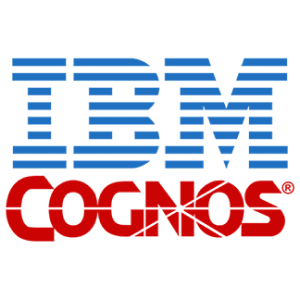One of the team’s early success stories happened shortly after they first onboarded Coalesce. “We’d gotten some JSON files from a vendor, and one of our developers spent about three or four weeks trying to parse it using our legacy tooling,” Crisp recalls. “After a lot of back-and-forth with the vendor, and looking into whether there was a specific add-on we could purchase for SQL Server, this dev decided to try to do it in Snowflake. He loaded up the file and through Coalesce’s JSON parsing functionality, it only took him a week to do the initial breakout of the nodes.” Crisp notes that this has freed his employee up to do other important things, whether that’s delivering on other projects or improving different processes. “What I don’t want him doing is spending a month mapping, breaking apart, and parsing something that Coalesce can do in a fraction of the time,” he says.
Kelly White acknowledges that while he is pretty new to Coalesce himself, he has already become a big fan of the platform. “I love the ease of the SaaS setup,” he says. “Our team can just basically log in and start working. Some products I’ve worked with at other places didn’t work that way—you needed to waste a lot of time fixing the plumbing, and it was like having a new car that was always in the shop and that you couldn’t use.”
White also appreciates how seamlessly Coalesce integrates with Snowflake: “I’ve noticed that as Snowflake features roll out, they seem to be available right away in Coalesce. For example, I’ve been working with Parquet file loading, and we heard from our Snowflake rep that they now have a vectorized scanner for Parquet file loading. We reached out to the Coalesce team and they created a node to do this immediately. This node allows us to load Parquet files four times faster using Snowflake, something we’re excited about because some of our data loads are very large.”
The Data Services team hosts Snowflake on Azure, where they are using Azure Data Lake Storage. Most of their ingestion sends things directly to Azure Data Lake, then they use Coalesce to bring that data into Snowflake. “Initially, Kelly and I were unsure how we were going to get the data from the data lake into Snowflake,” Crisp recalls. “We started looking in Coalesce Marketplace, where we found the CopyInto Node (which automates the process of copying files from object storage into Snowflake), installed it in a few clicks, and then were off to the races. Now we’re starting to tinker with the idea of creating templatized nodes that meet the specific needs of our design methodologies. It’s really cool to be able to create a new Node Type off an existing one and make adjustments to it, not to mention having access to the vast amount of Nodes and Packages available from Coalesce Marketplace.”
Crisp says that his developers are excited to start working with Coalesce. “One of the cool things about Coalesce is that it provides a great, repeatable framework. Kelly has done a lot of work making sure that we have a step-by-step guide and a framework on how we plan to utilize the tool in our environment. Coalesce makes that extremely easy to repeat over and over again. Now that we hammered out some of those initial details in our first pipeline with one developer, I’m excited to see how quickly we can get our other developers up to speed.”
Crisp says that part of what motivates the team is not just that Coalesce is so easy to use, but also that it is so enjoyable to build with. “When I show Coalesce to someone for the first time, they don’t seem overwhelmed or intimidated by it; instead, they’re eager to try it out, to poke around and create a node,” he says. “I have one developer who’s starting to play around with Coalesce call me on a Saturday. He was bored, I was bored, and so we started working together on a weekend because Coalesce is so fun to use. He got really excited about it. We were able to reference the initial pipeline we’d already built and replicate a lot of it, taking advantage of templates and Jinja code to manipulate the objects in our pipeline in a way that would not have been so easy before.”
“When I show Coalesce to someone for the first time, they don’t seem overwhelmed or intimidated by it; instead, they’re eager to try it out. I have one developer who’s starting to play around with Coalesce call me on a Saturday…. We started working together on a weekend because Coalesce is so fun to use.” —Andrew Crisp, United Community Banks
White believes that by using Coalesce, the team will continue to be able to work faster and faster. “We’re pulling in a wide spectrum of data—XML, JSON, Parquet—and each one has its own build pattern,” he explains. “Our data sources vary from dirty to clean data, so the transformation rules we want to apply vary greatly across different data sources. We’re documenting those rules and patterns, so when new people join, they’ll be able to say, ‘Oh, I’ve got data in JSON storage. Here’s the wiki, here’s what I need to pay attention to. Here’s how I make bulk changes in Coalesce quickly.’ I can see us just getting much faster as we get more comfortable with the platform, but it has also given us the chance to do it right the first time with a pattern.”
White predicts that one of the best outcomes of all the changes the team has put in place is something downstream data consumers may not even notice: “Because we’re spending more time upfront transforming the data from different sources and cleaning it up, they’re going to see fewer data anomalies and problems. We can optimize the data once and then it’s finished, so those users don’t have to deal with data issues.”
According to Crisp, the work his team is doing is starting to create a positive buzz across the entire bank, as more and more groups come to them asking for help with data projects. All this means that United Community is on the road to becoming a truly data-driven organization. “I guess Kelly and I did a really good job selling the vision because the business is excited,” he says. “They’re bought in and energized around the possibilities of what all these solutions can help us provide. And I’m excited because I think it’s going to give us the next real evolution of what our self-service data community is able to accomplish—that’s a big win.”








